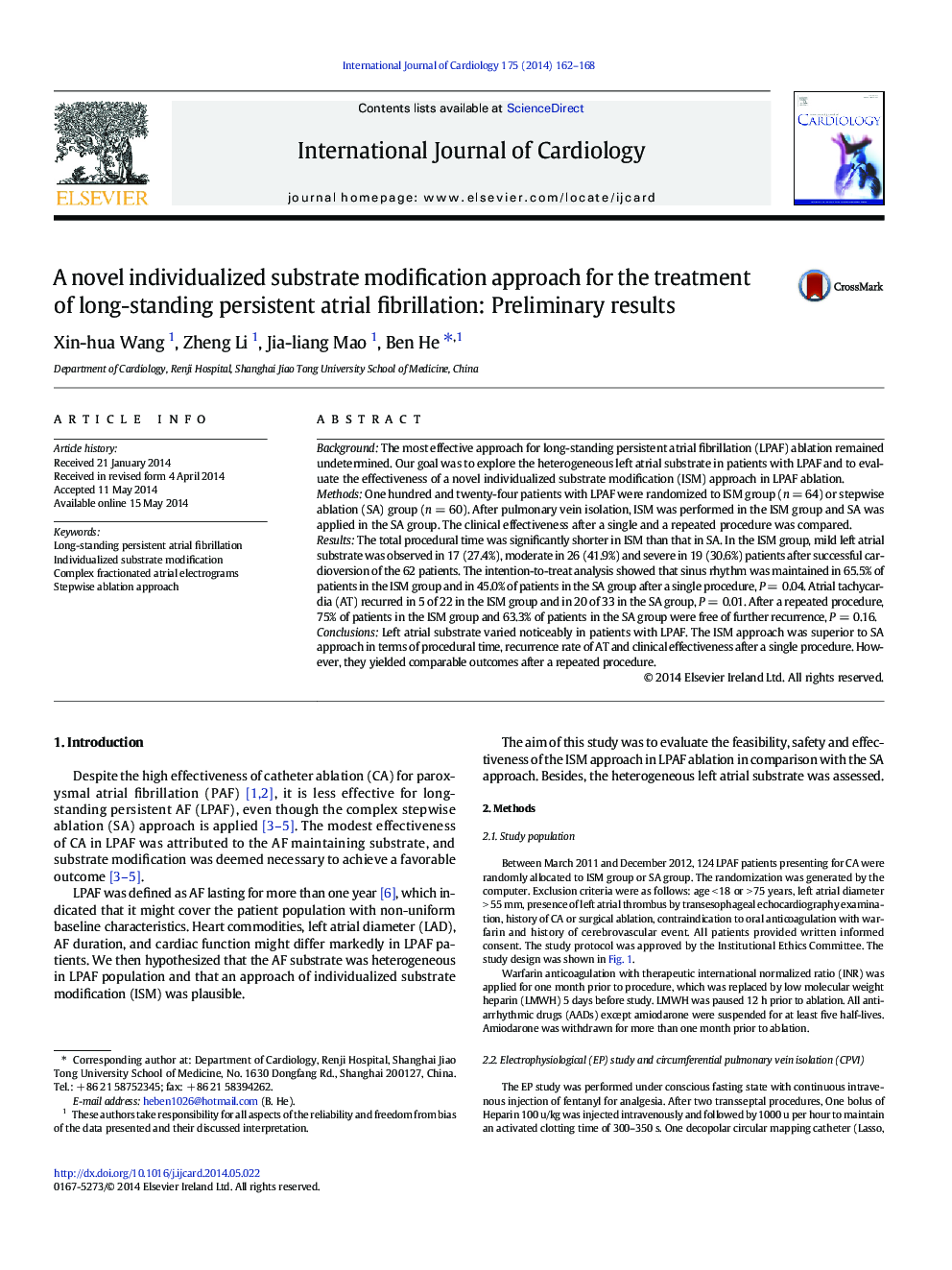| Article ID | Journal | Published Year | Pages | File Type |
|---|---|---|---|---|
| 5971247 | International Journal of Cardiology | 2014 | 7 Pages |
â¢The total procedural time was significantly shorter in ISM than that in SA.â¢AF-free rate was 65.5% in ISM vs. 45.0% in SA after a single procedure, P = 0.04.â¢Recurrence of atrial tachycardia was 5/22 in ISM vs. 20/33 in SA, P = 0.01.â¢AF-free rate was 75% in ISM vs. 63.3% in SA after a repeated procedure, P = 0.16.
BackgroundThe most effective approach for long-standing persistent atrial fibrillation (LPAF) ablation remained undetermined. Our goal was to explore the heterogeneous left atrial substrate in patients with LPAF and to evaluate the effectiveness of a novel individualized substrate modification (ISM) approach in LPAF ablation.MethodsOne hundred and twenty-four patients with LPAF were randomized to ISM group (n = 64) or stepwise ablation (SA) group (n = 60). After pulmonary vein isolation, ISM was performed in the ISM group and SA was applied in the SA group. The clinical effectiveness after a single and a repeated procedure was compared.ResultsThe total procedural time was significantly shorter in ISM than that in SA. In the ISM group, mild left atrial substrate was observed in 17 (27.4%), moderate in 26 (41.9%) and severe in 19 (30.6%) patients after successful cardioversion of the 62 patients. The intention-to-treat analysis showed that sinus rhythm was maintained in 65.5% of patients in the ISM group and in 45.0% of patients in the SA group after a single procedure, P = 0.04. Atrial tachycardia (AT) recurred in 5 of 22 in the ISM group and in 20 of 33 in the SA group, P = 0.01. After a repeated procedure, 75% of patients in the ISM group and 63.3% of patients in the SA group were free of further recurrence, P = 0.16.ConclusionsLeft atrial substrate varied noticeably in patients with LPAF. The ISM approach was superior to SA approach in terms of procedural time, recurrence rate of AT and clinical effectiveness after a single procedure. However, they yielded comparable outcomes after a repeated procedure.
